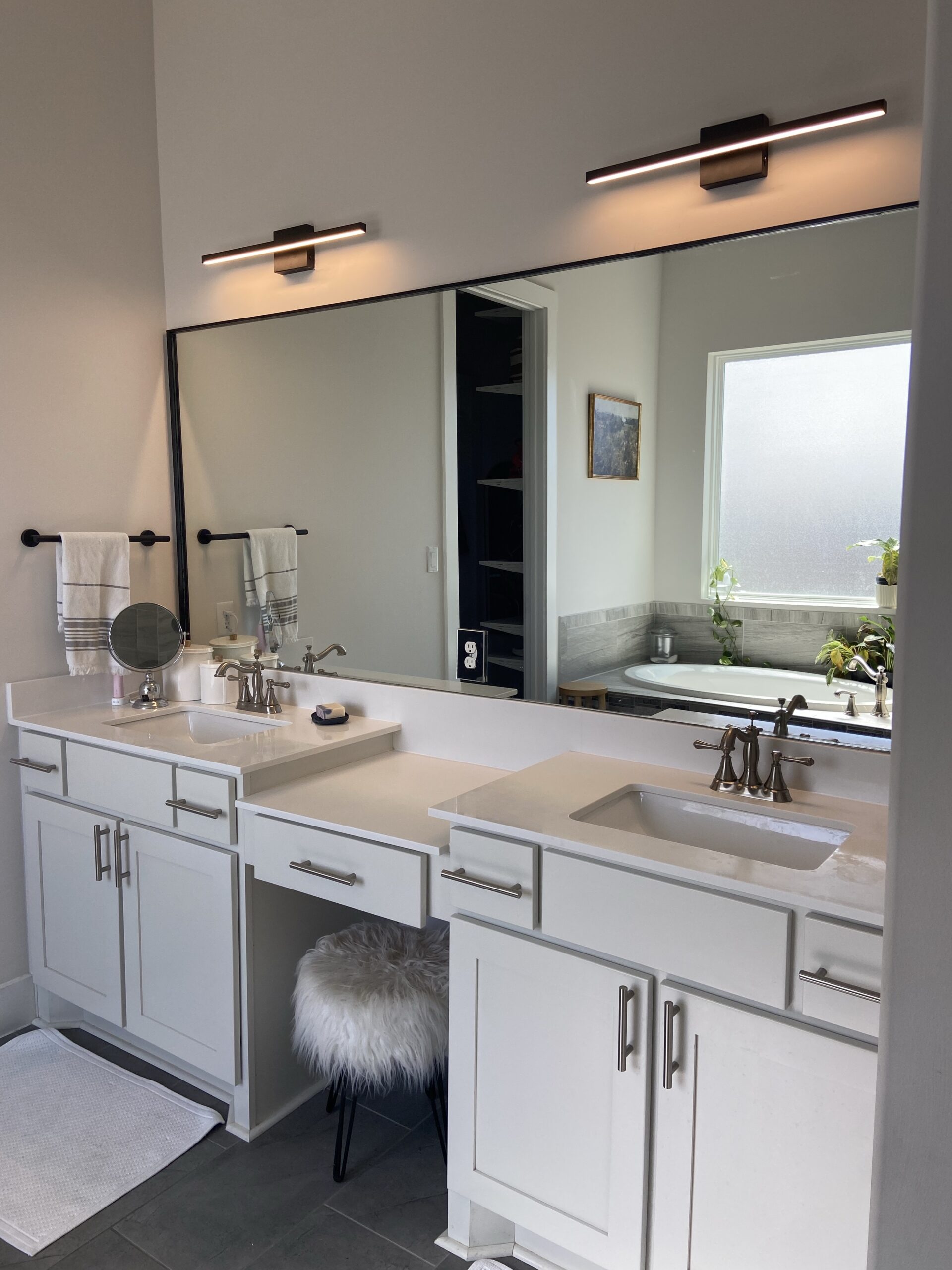I love my farmhouse and love filling it with great farmhouse inspired decor. I fell in love with a blanket ladder at Target, but sadly it was outside of the budget. As I stood there staring at it longingly, I thought I could probably make a version of it myself for a lot less money. Follow me on my journey to make the best DIY Blanket Ladder!
Getting the Perfect Wood
I went home and took an inventory of my wood supply. I find tons of free lumber and scrap wood through my neighborhood Facebook groups. A few months ago, I acquired 6 intact wood shutters from the exterior of an old house for free. The shutters were brown on one side and green on the other side. I went back and forth over whether to keep the paint on the wood shutters or strip the paint completely and add a stain to the wood. I decided to leave the paint on the shutters and sand it down in places to give it a rustic farmhouse look. However, if you don’t have any scrap wood you can buy your wood of choice from Home Depot, I would recommend buying furring strips because they are the best bang for your buck, but any wood will do.

Materials/Supplies:
- scrap wood or furring strips (I used three 6 ft long boards)
- miter saw
- nail gun
- hand sander/sand paper
- wood stain of your choice
- measuring tape
- pencil

Cutting and Preparing the Wood
Before you begin, decide on the height you want your ladder to be. I chose to make my ladder 50 inches tall. Using the pencil and measuring tape, I took two pieces of wood from one of my shutters and marked off 50 inches on each piece.
I chose to add 4 ladder rungs to my ladder; you can add as many or as little ladder rungs as you like depending on the height of your ladder. I took a third piece of wood from my shutter and marked off 4 separate 1 foot long pieces with my pencil and measuring tape, these would become my rungs.
After I had all of my wood pieces marked I proceeded to make my cuts. I wanted the bottom of my ladder to sit nearly flush with the floor while the top half rested against the wall. I set my miter saw to a 15 degree angle. I cut the marked ends of both of my wood pieces using the 15 degree angle cut on the miter saw. I set my two base pieces to the side.
I set my miter saw angle back to zero so I could cut all of my ladder rungs. I cut the 4 ladder rungs along the lines I had marked earlier, each rung should be 1 foot in length.
Sanding and Staining
I chose to sand down the existing paint on my repurposed wood using a corded hand sander. The corded hand sander made the project go a lot faster, however, if you don’t have a corded hand sander you can use regular sand paper. If you are using wood without paint no sanding is needed.
I added a layer of gray wood stain to my sanded wood to give it a rustic aged look. There are a variety of wood stains and colors, pick the stain that is right for your style.
Assembling the Ladder
After the stain dried completely on my ladder bases and rungs, I began the assembly process. I measured and marked the location I wanted each rung to be placed on the ladder on both ladder bases. The markings on the ladder bases should be exactly the same.
I placed the ladder bases on the ground parallel to each other. I placed each ladder rung in between the ladder bases in the pre-marked locations. I angled the first ladder rung towards the ground. Using my nail gun, I placed four nails on the outside of each ladder base into the ladder rung (eight nails per ladder rung). I continued angling the remaining ladder rungs towards the ground and attached them to the ladder base as indicated above.

Finishing Touches
I did not patch the nail holes on my ladder. I went with a rustic farmhouse ladder and thought the nail holes gave it some character. However, if you want to patch the nail holes you can always fill the holes with wood filler and sand it down prior to staining.
I added a thick felt adhesive to the back of the ladder that would be resting against the wall to prevent the wall from becoming damaged. Buy the felt adhesive I used for this project using the link below.

I placed the ladder directly into my living room and added various blankets. That is it! This is a super simple budget friendly DIY project that only took a couple of hours to complete. Time to get out there and start building!










